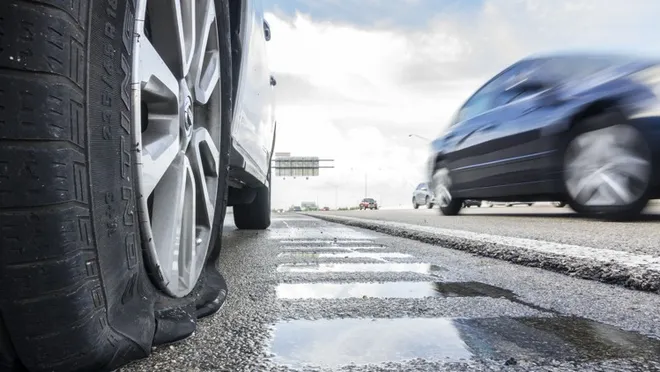Road trips will never go out of style as long as real-world stress keeps pushing everyone to find solace in the arms of nature in a quest to escape daily struggles and catch a breath. People are increasingly asking for routes to open roads, mountains, lakes, and beaches in addition to cities, according to statistics from Apple Maps. Road vacations offer a chance to get away from the grind, unplug technology, and rediscover the beauty of nature.
Travel plans may be thrown off if your car breaks down, particularly if it’s hundreds of miles away. Taking the right precautions to get your automobile ready for the lengthy journey can often make the difference between a pleasant and trouble-free trip.
So before you leave home in excitement for that road trip, be sure to do these things to keep your car in good shape.

Check your tires and have a spare one
Remove the spare tire from the car, check it for damage, check the inflation pressure, and make sure it is still in good condition to guarantee a safe and dependable ride. Make sure that the pulley system is in good working order and isn’t rusty or seized, and if the spare tire needs one lower it. Before driving, be sure to know if the spare tire is difficult to obtain or has any problems. Temporary spare tires are meant to be used for brief periods at slower speeds and might need to be changed after each use.
Check your car’s battery
In modern cars, a weak or dead battery can cause issues with many different systems. Be mindful of this. Consumer Reports advises making sure the battery connection on your vehicle is secure and clear of corrosion. Disconnecting the battery and using a wire brush to clean the connectors is necessary if there is corrosion. It might be advisable to leave checking and cleaning a car battery to a professional if you’re not familiar with the process because batteries contain caustic acid that could spill if the battery connectors are forced off. Consumer Reports suggests that if your car’s battery is older than two years, you should have it examined once a year.
Top off fluids and replace filters
Verify the levels of all the fluids in your car, such as the power steering, gearbox, engine oil, and windshield washer fluid. The National Highway Traffic Safety Administration (NHTSA) advises filling them up before driving if any of them are low. It would be worthwhile to have your car’s oil changed before your trip if it’s almost time for one. Additionally, make sure the engine coolant (sometimes called antifreeze) tank is filled to the specified level by the vehicle’s manufacturer. According to the NHTSA, you could still need to have the coolant changed out even if it is filled to the recommended level if there are floating particles present.
Coolant can also get acidic with time, so you might want to have the rust in your coolant tank inspected. Other components of the car, like the radiator or hoses, could sustain damage as a result. Again, if the engine air filter is unclean or clogged with debris, it should be replaced. The engine air filter collects dust and debris to keep them from reaching the engine. Otherwise, the performance of your car’s acceleration could be impacted by the dirty filter.

Prioritize visibility
Increased knowledge of the driving environment lowers stress levels and increases safety when driving. Popular car safety technologies like Emergency Front Collision Warning & Braking and Adaptive Cruise Control can ensure that drivers have the best possible view. Use the proper summer-rated washer fluid and think about applying a water-repelling coating to enhance the operation of your windshield wiper blades.
For stubborn dirt and haze, wash the interior window surfaces with warm water and liquid dish soap. It’s also advisable to do a thorough lighting inspection to make sure all of the headlights, brake lights, signals, and hazard lights are operational. Drivers can maintain a safer driving environment with the use of these elements.
Check the brakes
The brakes on your car may be making squealing sounds, which could be a sign of worn brake pads. Get your car’s brakes checked out by a professional before you drive if they are making this noise or any other strange noises. Pressing the brake pedal may cause it to feel spongy, which could mean there is not enough brake fluid. Remember to check this fluid’s level while you check the others, and top it off if necessary.
Other essential things to keep in your survival kit can be a chain or thick towing rope, electric charger wire, flashlight, screwdrivers and wrenches of different sizes, bungee cords, pliers, and a hammer.
It’s better to take extra caution when going on road trips than to leave certain things to chance. The worst thing that can happen to you is having your anticipated trip cut short because of an anomaly with your car. Making sure your car is in good shape before a road trip will help you avoid having to spend your holiday in a mechanic shop.




